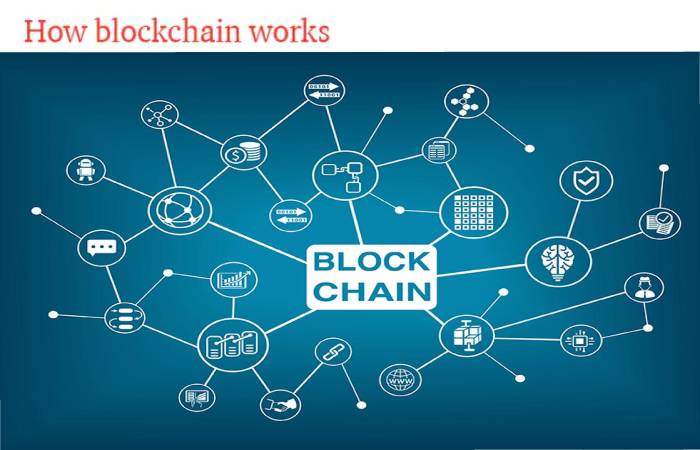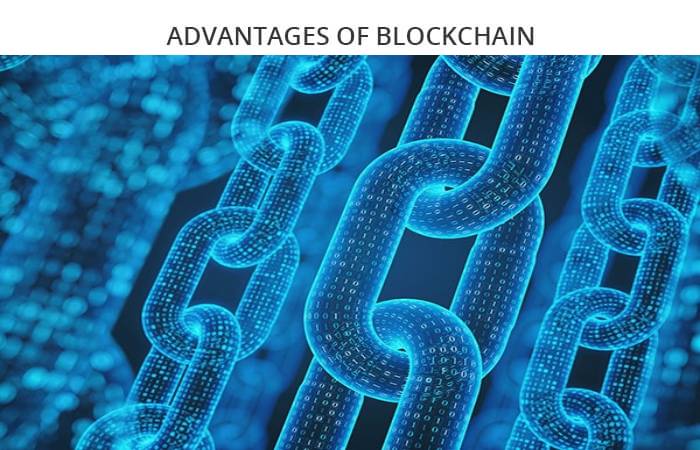Table of Contents
What is Blockchain?
Blockchain in Spanish means chain of blocks. It is a system with which you can secure transactions between people worldwide without the need for intermediaries.
Marc Andreessen, the creator of Netscape and partner at Andreessen Horowitz, one of the largest Private Equity funds in Silicon Valley, has defined Blockchain technology as a registry, that is, a ledger of digital events that is shared between different parties.
Blockchains can only be updated by most system participants’ consensus, called nodes, and are essentially computer-ready. This information can never be erased or modified, so the Blockchain is presented as an immutable and permanent record.
Blockchain was born out of the need to eliminate intermediaries such as banks in financial operations. These institutions are necessary to carry out valuable transactions because they are in charge of certifying that we are who we say.
In exchange for providing us with this service, banks or electronic platforms such as PayPal keep user data and trade with them. This restricts privacy and, with its freedom.
How Blockchain Works?

- Now that you know what technology is, you should know how it works. The process is not complicated, but it involves more people.
- It is no longer the bank in which you must certify the transactions but a group of users.
- Everything starts when A wants to make a transaction for B. In the network, this transaction is represented as a block.
- This is transmitted to all parts of the network, to the connected nodes, to approve its validity. Once this is done, the block can now be added to the chain, becoming a transparent and memorable record. Finally, the money moves from A to B.
- In this process, the nodes confirm that whoever wants to make the transfer has sufficient funds to do so.
- If so, everyone ‘notes’ the transaction and certifies it can become part of the transaction block. This block is going to get bigger to the point where it does not support more transactions.
- The block’s capacity will depend on the structure of the blockchain and the size of each transaction.
- Once you have reached your limit, it will be time to validate it, which occurs when users do mining. This work consists of carrying out a series of quite complex calculations that, in addition to time, require a lot of electricity.
- Once this is done, the blocks will permanently register on the blockchain.
- This means that they cannot modify without altering the other blocks linked to them, something practically impossible. It would be necessary for most of the nodes to validate it to carry out such an operation.
Advantages of Blockchain

Blockchain is a large ledger where all transactions are recorded. With this technology’s appearance, many fintech, that is, startups that offer their clients innovative financial products and services through the use of ICTs, which are information and communication technologies.
These fintech companies, especially financial ones, take advantage of Blockchain for their business.
They have also started using regtech (technology regulation) solutions to reduce risks, increase security, protect their data, among other things.
But beyond what has emerged with the arrival of blockchains, it is important to know what specific advantages their use offers.
1. Allows you to Make Financial Transactions Safely and Reliably
- One of the main advantages of Blockchain is that it allows making financial transactions between two participants safely and reliably.
- Intermediaries no longer participate, but the users themselves have control of their information and the entire transaction.
- This information is distributed in multiple nodes independent of each other. They register and validate it without having to know the other participants.
2. It is Transparent and, at the Same Time, Private
- With this technology, transactions are more reliable for two reasons: they are transparent and also private.
- The fact is that although they cannot modify, the movements are integrated into the network as a whole and are public. That is, they can see without problems with each of the parties.
- At the same time, the data from the transactions carried out between the parties are private. The information flow does not exist since the design is based on a chained code block.
3. The Data is Impossible to Falsify
- Another great advantage, which makes it even more reliable, is that it is impossible to falsify once the transaction data record.
- They are immutable; that is, they cannot modify or delete.
- This is possible because it works with different forms of data verification. Therefore, the alteration of transactions by third parties is practically impossible.
- Also, the database has a history with each of the operations since the creation of the technology.
4. It is an Immediate Process
- With banks, you have to wait a while for a transaction to complete. With Blockchain, since there are no intermediaries, the process is immediate.
- The computer system used for operations works 24 hours a day, every day. Since the information is transmitted and saved automatically, there is no need to wait.
5. Information is Never Lost
- Because many nodes participate in its validation, the information is secure.
- Even if the network went down, the service would never be lost and would continue to function. Why? It only takes one of the nodes to be active.
- This is achieved thanks to decentralized networks, making it more resistant to malicious attacks since it does not have a central point of failure.
6. No Mistakes
- Banks can make mistakes in transactions, but Blockchain cannot. The data recorded on a blockchain is always correct because a network of people constantly checks it.
- The recorded information is agreed upon by all participants, and therefore, there are no errors.
7. The Transaction Cost is Low
- One of the big problems for banks and foreign exchange platforms like PayPal is high commissions.
- These are imposed, and there is nothing that users can do against it if they want to use the service.
- With Blockchain, users can free themselves from large commissions since the exchange of assets with this technology usually has a lower cost.
8. Encourage Globalization
- With Blockchain, globalization takes another step. And is that with this technology, there will no longer be borders for transactions.
- Tedious paperwork and even export procedures can avoid. Regardless of the currency, goods and services can trade in another country without involving so many intermediaries.
Applications of Blockchain

The financial sector and the world of cryptocurrencies are not the only ones that can benefit from Blockchain technology. Many sectors see this technology’s potential, which, added to others, can be very useful.
In fact, according to a study carried out by the IBM Institute for Business Value in 2017, by time, 33% of companies were already using Blockchain or were considering its use soon. Also, 78% of those surveyed said they explored its use to develop new business models or respond to their sector changes.
Concerning the financial sector, the World Economic Forum has ensured that we will witness the Blockchain revolution in the coming years, as it will eventually become the “heart” of the global financial system.
Banks already use this technology to streamline payments, transfers, and the sending of remittances and lower the costs associated with these processes. Stock markets like Nasdaq use it too.
But as we have said, Blockchain applications not limited to the financial system. These are the areas in which this technology also being leverage.
1. Distributed Cloud Storage
- Blockchain allows distributing data storage. That is, instead of depending on services such as Google Drive or Dropbox.
- Which centralize cloud storages. Files can save on a P2P (peer-to-peer) network, which means several users will save them.
- In this way, since the information does not store in the same space, it is more difficult, if not impossible, for it to attack by hackers or lost due to technical problems or natural disasters, for example.
- An identical copy of the data will store on every node on the network, making the system more secure.
2. Decentralization of the Internet of Things (IoT)
- Most Internet of Things platforms is based on centralized models, meaning that a single company controls connected devices.
- However, it is a poorly functioning system. As this technology’s popularity increases, it becomes more necessary for teams to quickly and autonomously exchange data with each other.
- The solution is in the development of decentralized IoT platforms, and Blockchain allows it.
- With the blockchain, the data exchange carries out safely and reliably. An unalterable record creates all the messages that the different connected smart devices have exchanged.
- Some companies are already betting on this solution, such as IBM, which has created the ADEPT (Autonomous Decentralized Peer To Peer Telemetry) platform in collaboration with Samsung.
- It using Blockchain technology, this system is capable of generating a distributed network of devices.
3. Identity Management
- Another great application of Blockchain is in identity management. With this technology, users can create their own digital identity, safe and reliable because it is tamper-proof.
- Experts say that this kind of blockchain-based ID could replace the increasingly vulnerable online usernames and passwords soon.
- People will use their Blockchain identity for many things, from simple actions like accessing websites and applications to signing digital documents.
- There are already companies that have services of this style, such as Keybase, Onename or ShoCard.
4. Data Registration and Verification
- This technology can not only use to store financial transactions in a secure and immutable way.
- It can also store any other type of information, thus generating an incorruptible distributed registry, which also stands out for being more secure than traditional databases.
- This application can use in various sectors. For example, in clinics and hospitals, it can create a record of patients’ medical history.
- It can also help protect intellectual property and creative digital products such as e-books, music, photos, etc. It can also use for a vehicle or property registration.
Conclusion
Blockchains came to change this. And it is that with this technology, it is not a single participant who has the information but millions. It is a large database in which many nodes keep a copy of the data.
Blockchain bases the certification of consensus information. That is, if we all have the same information, it means that this information is true.
Each transaction that is made add as a block to a chain. Therefore, the records link and encrypted to protect both the security and privacy of transactions.
This also means that such transactions are anonymous. The system only knows that you want to transfer a certain amount to another from a digital wallet, but the people’s data is unknown.


